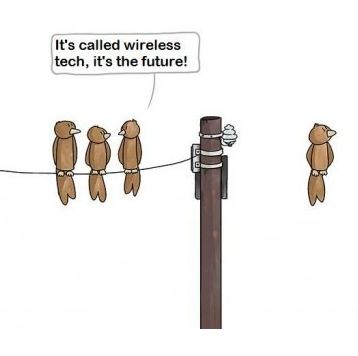Mobile broadband to fuel ICT growth
According to ITU data, internet penetration in Sri Lanka had reached 15% of the total population, meaning that there are roughly 3.2 million users in Sri Lanka – as of 2011 [1]. This also represents annual growth of approximately 3% from 2008 onwards, which is steady rather than remarkable.
While the percentage of internet penetration in Sri Lanka is better than most countries in South Asia (and almost as much as the penetration in Pakistan), what is surprising is that only 1.7% of the population have a fixed broadband connection [2]. The same pattern can be seen among other South Asian nations as well.
What is holding back internet penetration in Sri Lanka?
Sri Lanka already has the advantage of having a high literacy rate among its population. In addition, according to World Bank data, up to 76% of the country has access to electricity. This should be an indicator that the infrastructure is in place for a boom in ICT penetration in the country.
However, the cost associated with traditional equipment such as laptops and desktops means that such devices remain a luxury to many Sri Lankans outside of the Western Province. Additionally, the monthly rentals and perceived low value addition through owning a computer does not provide adequate incentive for many people to part with their hard earned money.
A monopoly in wired broadband
The lack of competition in fixed data services has resulted in a situation where there is little incentive for government owned ISP to push aggressively to promote and add new subscribers to their network. Its goal of increasing its subscriber base to 600,000 by 2014 [3] will bring fixed broadband penetration to 2.8 %.
Mobile technology as the catalyst
Mobile penetration in Sri Lanka was a staggering 87% in 2011, and based on the numbers it would seem that a majority of Sri Lankans use their mobile connections to access the internet. The highly competitive mobile telephony market has seen the implementation of 3G networks theoretically capable of up to 42 Mbps throughputs. This has driven many frustrated domestic internet users to dump their slow wired connections and opt for mobile broadband dongles instead.
The existing mobile network infrastructure also has the advantage of having provided coverage to a great deal of populated Sri Lanka, and this is ideal to build on for future broadband enhancements.
 With 4G LTE (fixed wireless) already available to subscribers, the gap between the service offered by fixed and mobile services is closing fast. Operators are already scrambling to launch mobile versions of 4G LTE, as they continue to bring the latest mobile broadband technologies to the country in a bid to gain a competitive advantage in data services.
With 4G LTE (fixed wireless) already available to subscribers, the gap between the service offered by fixed and mobile services is closing fast. Operators are already scrambling to launch mobile versions of 4G LTE, as they continue to bring the latest mobile broadband technologies to the country in a bid to gain a competitive advantage in data services.
Why do we need growth in ICT?
The reasons for the country requiring ICT skills are well known and have been elaborated by a number of policy makers. However, it is not enough to only make equipment available. Users must have a meaningful purpose for connecting to the internet – i.e. apart from checking up on Facebook. The availability of online government services, price lists of essential goods, the ability to contact doctors for consultation and the availability of other such information on demand would significantly improve the standard of living in rural communities. Distance learning courses from universities could provide notable skills improvement to students and should also be used to promote the benefits of the internet.
A government sponsored ICT campaign is already underway, and we can only hope that this raises significant awareness of the benefits among more of the student population in Sri Lanka.
Subsidising equipment and making services accessible
Smartphones are probably the most feasible equipment that can be used to bridge the gap in broadband availability. Affordably priced smartphones – with useful applications developed for the local market – would help promote the use of online services and speed up ICT growth in the country.
Tablet computers, with new models that seem to be released almost every month and are manufactured by a multitude of vendors, are far less costly and have almost as much functionality as the traditional PC.One method the government should seriously look at, in order to promote internet & ITC usage among Sri Lankans, is to offer both smartphones and tablets at subsidised prices through existing mobile operators.
While focusing on improving the English language proficiency of the population, there should also be a focus on developing local applications in all three languages. This initiative is already underway and further progress will go a long way to help overcome the language barriers faced by many Sri Lankans.
Cutting the wire
It is time to focus on ICT growth using mobile broadband technology. Taking advantage of a mature mobile industry – whose operators also have access to multinational expertise – the government needs to work in partnership and provide assistance to realise the objective of ICT growth in the country.



Very insightful.
There is no doubt that the speeds of the fixed line services suck! But if you are one of the 1.7% you still have a reliable connection.
But, are you sure that leading operators have 3G coverage around the island?
I’m living in a sub-urban area about 1.5 km from the nearest tower of my service provider. Still there is not enough signal strength to operate the 3G dongle at a considerable speed. so, we can’t cut the wire!
Wireless technology should have no chance replacing a good wired network. However there is nothing pushing SLT to upgrade or look at ways to improve our data speeds .
3G network suffer from coverage loss through interference, when a high number of users are connected. LTE could be a game changer. Being a technology designed for data it will offer better speeds and experience while also not having the same interference related problems of existing 3G networks.
This may give SLT something to think about.